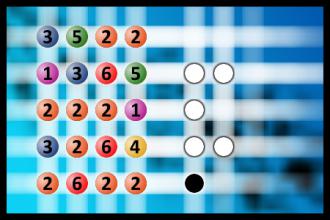Which is a winning combination of digits?
The computer chose a secret code (sequence of 4 digits from 1 to 6). Your goal is to find that code. Black circles indicate the number of hits on the right spot. White circles indicate the number of hits on the wrong spot.Correct answers: 58
The first user who solved this task is James Lillard.
#brainteasers #mastermind

Happy Monday! Check out new jokes!
I did my first nude painting yesterday.
The neighbors weren't happy but the front door looks great!
Man walks into an ancient Greek tailors with a pair of ripped trousers.
Tailor says, "Euripides?"
Man says, "Yeah. Eumenides?"
Her: It's ova.
Me: Why? Is it because I'm terrible at crosswords?
If I'm reading their lips correctly …
My neighbors are arguing about some creepy guy next door.
I married my wife for her looks.
Though not the ones she been giving me lately.
My son wanted to know what it was like to be a parent.
So I woke him at 2am to tell him my sock came off.
English lesson…
Tsunami
T is silent
Psychology
P is silent
Knife
K is silent
Honest
H is silent
Wife
Husband is silent

